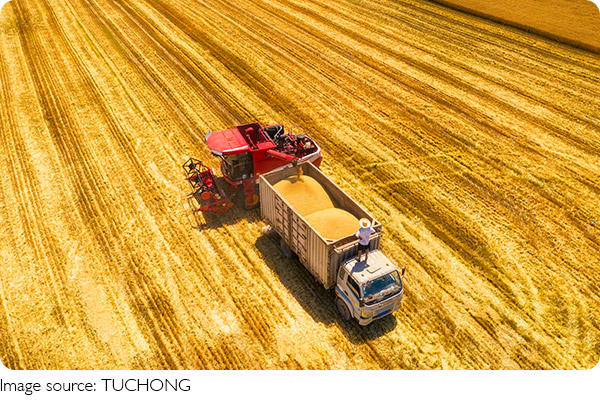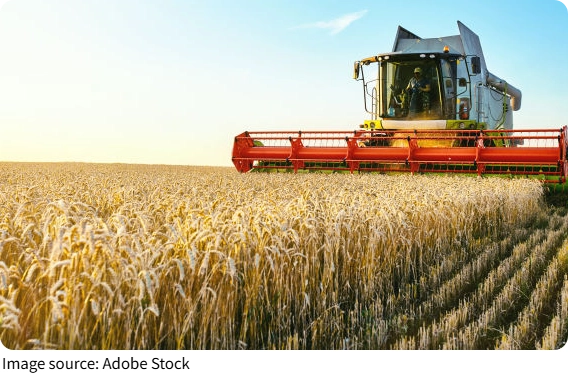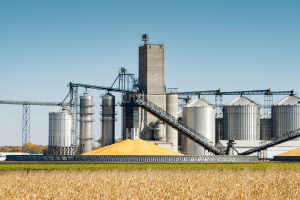Cut Harvest Fast

Hey Lykkers, have you ever wondered how harvesters manage to cut and collect crops from hundreds of acres in just one day? It seems like magic, but it's actually the result of brilliant mechanical design and precise coordination.
Today, let's explore how these impressive machines work step by step and uncover the secret behind their powerful performance. By understanding it together, we’ll gain a deeper appreciation for the technology that supports modern farming.
Understanding the Main Parts of a Harvester
Before diving into how the harvester operates, we need to understand its basic components. While different models vary slightly, the core parts remain quite similar:
- Cutter Header: Located at the front, it's responsible for cutting crops at the base.
- Feeding System: It moves the cut crops into the machine.
- Threshing System: Separates the grains from the stalks.
- Cleaning System: Removes unwanted debris and keeps the grains clean.
- Residue Management: Discards leftover stalks and chaff.
- Driver’s Cabin: Where the operator controls all the functions.
Once we understand how each of these parts contributes, it becomes clear how the harvester performs such a complex task with incredible speed.
The Cutter Header: Where Harvest Begins
The process starts with the cutter header, which slices through the crops at ground level. It works like a giant moving scissor. Blades inside the header move rapidly back and forth, cutting through the stems in a clean sweep.
What’s really clever is the automatic height adjustment of the cutter. It can change depending on the crop type. For example, when harvesting wheat, the blade stays low; for rice or corn, it lifts higher to match the crop’s height. This prevents any part of the crop from being missed and helps reduce loss during harvesting.

The Feeding System: Guiding Crops into the Machine
Once the crops are cut, they don’t just fall to the ground—they’re pulled into the machine through the feeding system. This system usually uses rotating rollers to gently and steadily push the stalks and grains toward the inner parts of the harvester.
As the rollers turn, they not only move the crops but also remove some leaves and light debris. This pre-cleaning step helps reduce the load on the next stages, ensuring everything moves smoothly and efficiently.
The Threshing System: Separating Grain from Stalks
This is where the real magic happens. Inside the harvester, the threshing system takes over. Its job is to extract the grains from the crop. At the heart of this system is a spinning drum called the threshing cylinder. It’s lined with raised ridges or small hooks.
When the crops enter this drum, they’re spun rapidly. The grain heads get rubbed, knocked, and gently torn apart, releasing the grains from their stalks—kind of like hand-threshing but way faster and cleaner.
The harvester allows the operator to adjust the drum’s speed and spacing. If it's spinning too fast, it could damage the grains; too slow or too wide, and not all the grains get separated. So depending on the type of crop and its moisture level, we need to fine-tune these settings for the best results.
The Cleaning System: Getting Only the Good Stuff
After threshing, we’re left with a mix of grains, husks, and leftover plant bits. The cleaning system uses airflow and sieves to sort them out. Lighter debris like chaff and husks are blown away, while the heavier grains fall through the mesh and are collected in a storage tank.
Thanks to this system, we don’t need to worry about separating anything manually—the harvester handles it with precision and speed.
Residue Management: Disposing the Unwanted
Of course, the leftover stalks and waste have to go somewhere. That’s where the residue management system comes in. It either spreads the chopped remains evenly back on the field as mulch or gathers them for later use. This keeps the field tidy and prepares it for the next planting season.
Why Harvesters Matter So Much
Harvesters may look intimidating at first glance, but every moving part serves a clear purpose. From cutting to cleaning, the entire process is designed for maximum speed and minimum crop loss. Thanks to this efficiency, farmers can harvest large fields in a fraction of the time it would take manually, saving both labor and cost.
Let’s Talk Harvesters!
So, Lykkers, next time we see a harvester at work, let’s take a moment to appreciate the engineering behind it. We’ve uncovered how it cuts, feeds, threshes, cleans, and clears—all in one smooth go! Have you ever seen one in action? Or do you want to learn how they’re maintained during the off-season? Drop your thoughts and questions—we’re always excited to explore more with you!
How a Combine Works: A view inside the combine [4k video]
Video by Griggs Farms LLC
-
 Fear of DarknessScientific Secrets: Why Do We Feel Fear in the Dark? Understanding the Roots of Our Nighttime Anxiety
Fear of DarknessScientific Secrets: Why Do We Feel Fear in the Dark? Understanding the Roots of Our Nighttime Anxiety -
 Cut Harvest FastHow Does a Harvester Cut Hundreds of Acres in One Day? The Secret Behind Its Speed Will Blow Your Mind!
Cut Harvest FastHow Does a Harvester Cut Hundreds of Acres in One Day? The Secret Behind Its Speed Will Blow Your Mind! -
 Future Robot RolesDiscover How Humanoid Robots Will Revolutionize Our Work, Healthcare, and Daily Life — The Future Is Closer Than You Think!
Future Robot RolesDiscover How Humanoid Robots Will Revolutionize Our Work, Healthcare, and Daily Life — The Future Is Closer Than You Think!